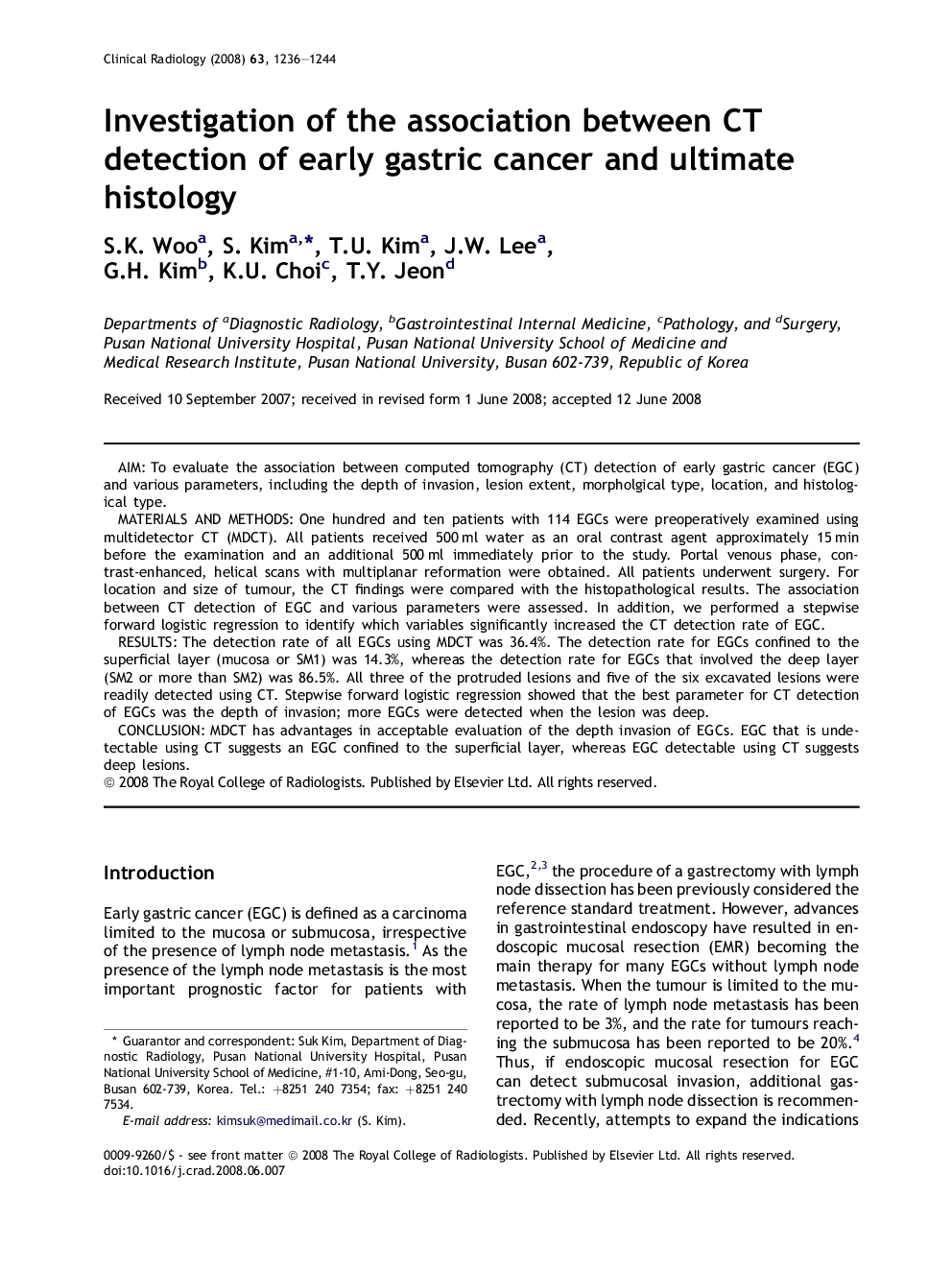| Article ID | Journal | Published Year | Pages | File Type |
|---|---|---|---|---|
| 3983126 | Clinical Radiology | 2008 | 9 Pages |
AimTo evaluate the association between computed tomography (CT) detection of early gastric cancer (EGC) and various parameters, including the depth of invasion, lesion extent, morpholgical type, location, and histological type.Materials and methodsOne hundred and ten patients with 114 EGCs were preoperatively examined using multidetector CT (MDCT). All patients received 500 ml water as an oral contrast agent approximately 15 min before the examination and an additional 500 ml immediately prior to the study. Portal venous phase, contrast-enhanced, helical scans with multiplanar reformation were obtained. All patients underwent surgery. For location and size of tumour, the CT findings were compared with the histopathological results. The association between CT detection of EGC and various parameters were assessed. In addition, we performed a stepwise forward logistic regression to identify which variables significantly increased the CT detection rate of EGC.ResultsThe detection rate of all EGCs using MDCT was 36.4%. The detection rate for EGCs confined to the superficial layer (mucosa or SM1) was 14.3%, whereas the detection rate for EGCs that involved the deep layer (SM2 or more than SM2) was 86.5%. All three of the protruded lesions and five of the six excavated lesions were readily detected using CT. Stepwise forward logistic regression showed that the best parameter for CT detection of EGCs was the depth of invasion; more EGCs were detected when the lesion was deep.ConclusionMDCT has advantages in acceptable evaluation of the depth invasion of EGCs. EGC that is undetectable using CT suggests an EGC confined to the superficial layer, whereas EGC detectable using CT suggests deep lesions.
